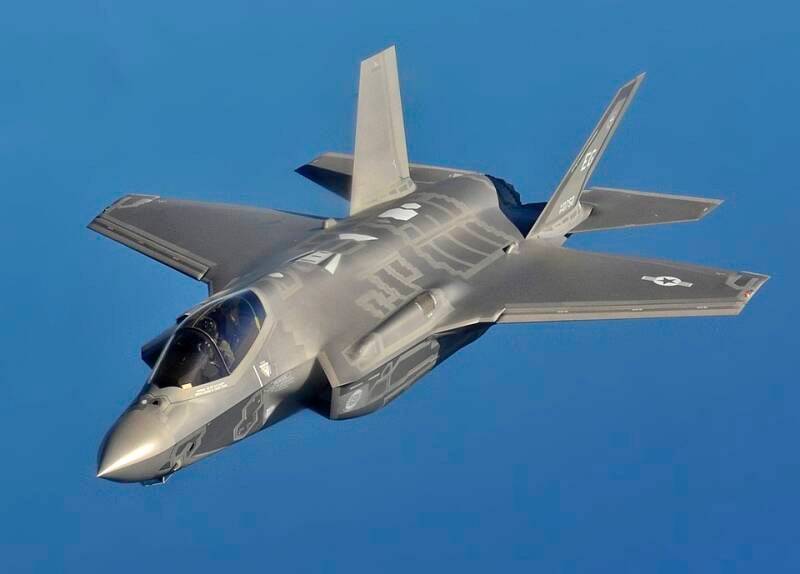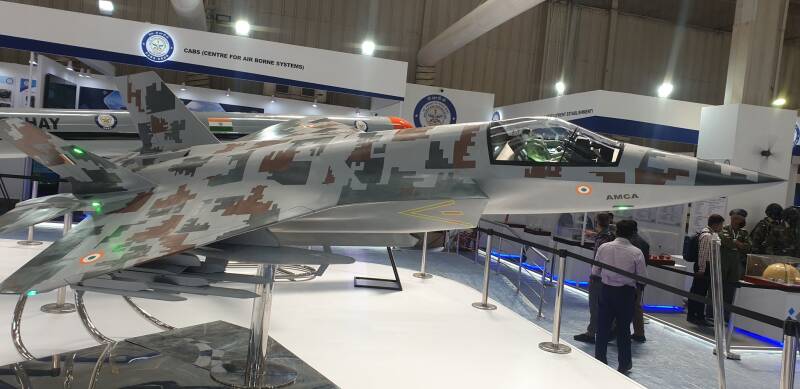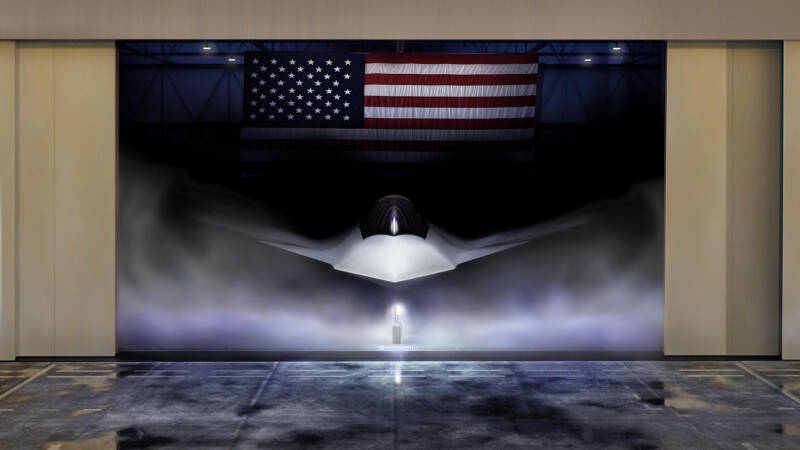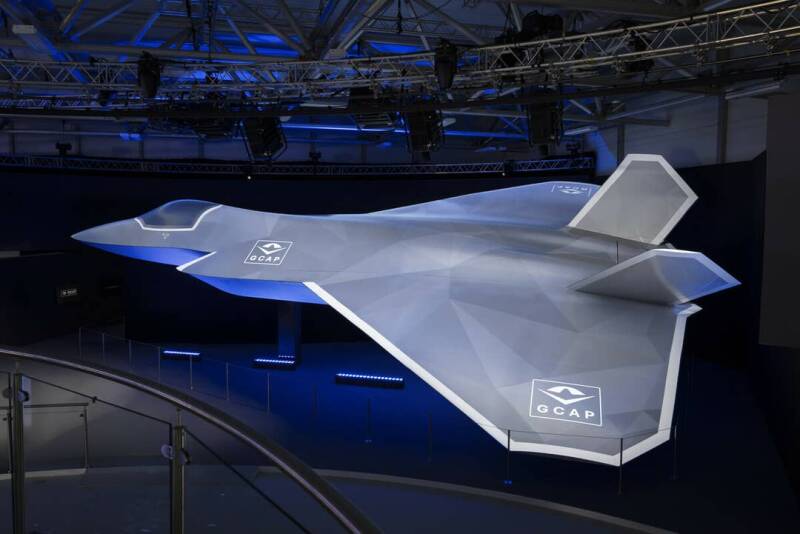6th Generation vs. 5th Generation - What's the Difference?
July 3, 2025
by Thomas W. Pohl
6th Generation Chengdu J-36 (left), 5th Generation Chengdu J-20 (right)
With all of the recent excitement with the development and testing of new 6th Generation fighter aircraft, I thought it would be interesting to examine the differences between the previous 5th Generation of fighter aircraft and the upcoming 6th Generation of fighter aircraft.
5th Generation Features
The features of 5th Generation fighters are led by the three big S's, Stealth, Supercruise and Supermaneuverability. These three features were pioneered by the Lockheed Martin F-22 Raptor. Added to this mix later in the generation is network connectivity. This feature was introduced by the Lockheed Martin F-35 Lightning II. The Lockheed Martin F-22 Raptor pioneed the use of stealth technology for fighter aircraft in its winning design for the U.S. Air Forces's Advanced Tactical (ATF) program, the YF-22 Lightning II. Leveraging previous work on other stealth aircraft such as their own F-117A Nighthawk, Lockheed Martin came up with right blend of stealth shaping and stealth coatings to create an aircraft with an estimated radar cross section (RCS) of around 0.0001 square meters, roughly the size of a small bird. Another contributing factor to the low RCS of 5th Generation fighters is that they carry their weapons in an internal weapons bay. 5th Generation fighters only carry weapons externally when stealth is not a priority.
Supercruise is the ability to fly at supersonic speeds without the use of fuel hungry afterburners. This allows the aircraft to get to its destination quicker and stay over the target for a longer period of time. The F-22's twin Pratt & Whitney F-119 engines produce 35,000 lbs. of thrust per engine and allow the F-22 to supercruise at a reported speed of Mach 1.5 to Mach 1.7.
Supermaneuverability is acheived by using thrust vectoring in additional to conventional control surfaces. This allows the aircraft to perform sharper aerial maneuvers, giving it an advantage over an adversary that isn't equipped with thrust vectoring engine nozzles. Thrust vectoring nozzles can either be two-dimensional or three-dimensional. The F-22 Raptor is equipped with the former while the F-35 is equipped with the latter. Check out our YouTube Shorts video of the F-22 demonstrating its supermaneuverability.
The F-35 later introduced network connectivity to 5th generation platforms. This allows the F-35 to seamlessly integrate electronically with other elements of the battlefield including those on the ground, on or under the sea, in the air or in space.
Examples of 5th Generation Fighters:
- Lockheed Martin F-22 Raptor (USA)
- Lockheed Martin F-35 Lightning II (USA)
- Sukhoi Su-57 Felon (Russia)
- Sukhoi Su-75 Checkmate (Russia)
- Chengdu J-20 Mighty Dragon (China)
- Shenyang J-35 (China)
- Turkish Aeropace Industries KAAN (Turkiye)
- Hindustan Aerospace Industries Advanced Medium Combat Aircraft (AMCA) (India)
6th Generation Features
6th Generation fighter aircraft build upon the previous 5th Generation by introducing new technological features to enhance stealth and combat performance. 6th Generation stealth features include aircraft that have tailless designs or have mininal ependagaes. An example of the former is China's Chengdu J-36. An example of the latter is the British/Italian/Japanese Global Combat Aircraft Programme (GCAP). In addition, 6th Generation fighters are equippped with next generation stealth coatings designed to counter the radar threats of the mid-21st century. Ceramic-based coatings are currently in development with the aim to reduce the maintainance time on the stealth coatings, which are notoriously lengthly with current polymer-based coatings. Polymer-based coatings are also subject to adverse effects due the weather. For example, the Northrop Grumman B-2 Spirit stealth bomber, a 5th Generation aircraft, requires a specially designed climate controlled shelter when deployed overseas. Ceramic-based coatings will solve this issue.
One of the biggest innovations of the 6th Generation is the Manned UnManned Teaming (MUM-T) concept. This concept was first brought to light by Australia which is developing a Loyal Wingman aircraft, the Boeing MQ-28A Ghost Bat, as part of their MUM-T effort. MUM-T allows a manned fighter to fly and control a group of unmanned drones that are tasked to perform a variety of duties including electronic warfare, decoy, and extra wingmen equipped with weapons. The last type of drone is often referred to as a "loyal wingman". A prime example of this is the U.S. Air Force's Collaborative Combat Aircraft (CCA) program which is tasked with developing drones to fly alongside the Boeing F-47 and Lockheed Martin F-35. Increment 1 prototypes of the CCA are already in development. These include the General Atomics YFQ-42A and the Anduril YFQ-44A.
Another feature of 6th Generation fighter aircraft include the integration of Artificial Inteligence (AI). This AI is an intregral part of the MUM-T concept.
Adaptive Cycle Engines (ACE) are another feature of 6th generation fighters. According to GE Aerospace, "The adaptive cycle engine provides a high-thrust mode for maximum power and a high-efficiency mode to extend mission range. Automatically alternating between these two modes dramatically transforms mission capability and enables unresticted operations." This translatates to a 30% increase in range. Other advantages stated by GE Aerospace include 2% greater thermal management and a greater than 20% increase in acceleration. The United States has led this technology innovation with their Adaptive Engine Transition Program (AETP). This led to prototypes being develop by General Electric (XA100) and Pratt & Whitney (XA101). These engines were developed with integration into later batches of F-35's as a goal but was ultimately rejected on cost grounds. However, the Boeing F-47 will be designed from the start with Adapative Cycle Engines. General Electric (XA102) and Pratt & Whitney (XA103) are currently developing prototype engines for the F-47. These new engines will also allow for greater power generation which in turn may power directed energy weapons in the future.
Examples of 6th Generation Fighters:
- Boeing F-47 (USA)
- F/A-XX (USA)
- Chengdu J-36 (China)
- Shenyang J-50 (China)
- Eurowing Global Combat Air Programme [GCAP] (UK/Italy/Japan)
- Dassault/Airbus/Indris Next Generation Fighter [NGF] (France/Germany/Spain)
- Saab Flygsystem 2020 (Sweden)
5th Generation Fighters
6th Generation Fighters
Saab Flygsystem 2020
Follow The Stealth Channel on social media!
Hashtags: #5thgeneration #6thgeneration #5thgenerationfighters #6thgenerationfighters #f22 #f35 #su57 #su75 #j20 #j35 #kaan #amca #f47 #faxx #j36 #j50 #gcap #ngf #fcas #scaf #flygsystem2020 #ngad #stealth #stealthfighters #thestealthchannel #supercruise #supermaneuverability #adaptivecycleengines #mumt #ai #cca #drones #yfq42a #yfq44a #mq28a #mq28aghostbat #lockheedmartin #northropgrumman #boeing #chengdu #shenyang #saab #eurowing #dassault #airbus #baesystems #leonardo #mitsubishi #indrus #tai #turkishaerospaceindustries #hal #hindustanaerospaceindustries #geaerospace #prattandwhitney #stealthcoatings

















